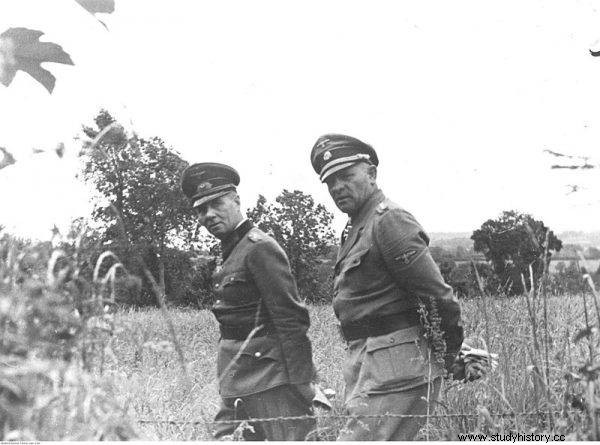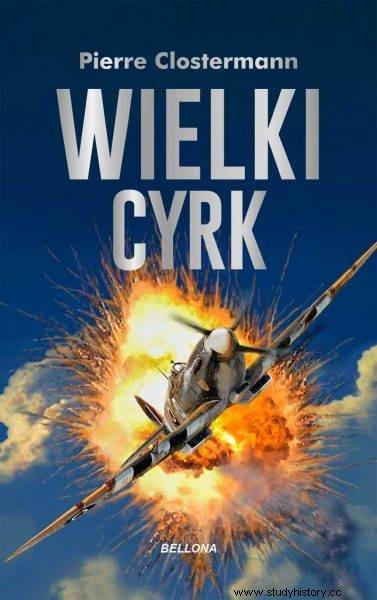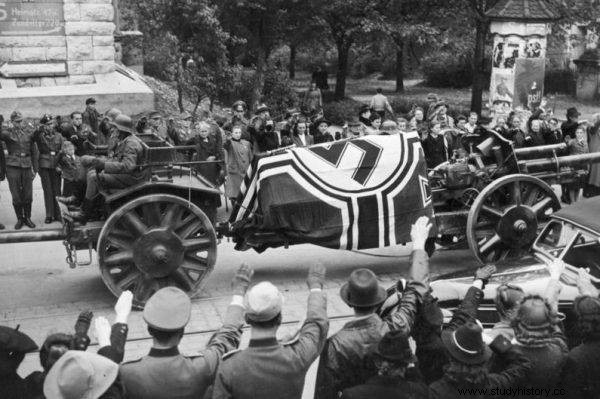It was a real "butterfly effect". So far, however, we do not know the answer to the most important question:who shot Erwin Rommel's car that day?
It was July 17, 1944. Field Marshal Erwin Rommel left Saint-Pierre-sur-Dives with his heavy Horch with an open roof. He was on his way to La Roche-Guyon Headquarters. His adjutant wanted to avoid passing the N 179 Livarot-Vimoutiers national road, which was full of wrecked vehicles. He suggested taking the district road No. 4. In the end, they had to take the N 179 anyway - for the same reason they wanted to avoid it.
Rommel may not have been in the area at all then, but in January 1944 Adolf Hitler forbade him to travel by plane because… too many officers died because of it. This ban started the real "butterfly effect". The sequence of seemingly unrelated events that followed ended tragically for the field marshal. What happened next?
Forewarned is not always insured?
According to Pierre Clostermann, a fighter ace from the Second World War and author of the book "The Great Circus", the commander of the First Armored Corps "Leibestandarte", Sepp Dietrich, from whom Rommel was returning, asked the Luftwaffe to provide the field marshal with "discreet protection" . Perhaps - if it did - this over-caution put Rommel in danger . According to Clostermann, a patrol of 602 Squadron, led by the South African pilot Chris Le Roux, was flying in the area. Everyone on Spitfires. In the "Big Circus" we read:
It was relatively quiet that afternoon. Anti-aircraft artillery, of course, but without any particular nervousness, and as always, successive cases that emerge senselessly from one another. All it takes is a short flash of sunlight on the Messerschmitt wing for Mause Manson, looking right at the moment, to shout: Aircrafts at 9 o’clock, slightly below! - Airplanes just below nine o'clock . Chris immediately dives in that direction, followed by Jonnsen and Manson. At the same moment, Bruce Oliver, who is in the crew with Jacques, spots a huge car with a folding roof, escorted by one or two motorcyclists. The car rushes headlong towards Vimoutiers.

The commander of the First Leibestandarte Panzer Corps, Sepp Dietrich, from whom Rommel was returning, asked the Luftwaffe to provide the Field Marshal with "discreet protection".
That day, the sky was filled with clouds and smoke from numerous fires. From above, the vehicles on the ground could not be seen. So… if it weren't for the Messerschmitts, Rommel would probably have made it to Headquarters.
80% chance of survival
On the other hand, the field marshal was very lucky that day. As Clostermann reported: Oliver opens fire from his two 20mm cannons and four machine guns. The bullet rips the driver's arm off the steering wheel and the heavy car begins to dance ... The second bullet hits the lowered roof at Rommel's back and explodes, tearing him apart. If an ultrasensitive projectile, which exploded in one fiftieth second in an aircraft's fuselage after penetrating a thin aluminum shell, were a piercing projectile (every fifth in the tape!), Rommel would have been killed on the spot . Every fifth in the tape. So Rommel had an 80% chance of not getting killed after all.

The article is based mainly on the book by Pierre Clostermann "The Great Circus" (Bellona, 2022).
The field marshal survived the gunfire, but his condition was tragic: had a streaked neck shrapnel, open fracture of the skull exposing the brain, a crushed piece of bone with part of the left ear , broken cheekbone and broken temple . In addition, the car - deprived of its driver - first hit a tree and then rolled over. Rommel was just kicked out. The unconscious was taken to the hospital in Vesinet, where he spent two weeks.
Meanwhile, three days after the shelling, something happened that could completely change the course of the war ...
Hitler's assassination
On July 20, 1944, Colonel Claus von Staufenberg made an unsuccessful attempt on Hitler. The Führer was only injured. General Carl-Heinrich von Stülpnagel tried to continue something like a planned coup, but to mobilize enough forces he was too "thin in the ears". In this situation, Erwin Rommel, who had already been in conflict with Hitler, could play a key role . But unfortunately the Allied pilots accidentally took it out of circulation…
Some of the conspirators were shot, others were tortured by the Gestapo. They testified (or agreed to testify) against Rommel. The case of the latter did not end until October 14. On that day, the field marshal, who had recovered a bit (although doctors in France did not give him great chances at first), Generals Wilhelm Burgdorff and Ernst Maisel visited his estate in Herrlingen. They brought an ultimatum from Hitler: or Rommel will kill himself with the poison brought by the generals , the case will be covered up and he will be able to count on a state funeral, or face trial for treason and execution by hanging . Before the field marshal left with the generals, he still managed to tell his wife that he would die in 15 minutes. State funeral ceremonies were held in Ulm.
Who was shooting?
Over the years, various sources have given divergent information on who actually shot the convoy of Field Marshal Erwin Rommel . According to some, the main "responsible" was to be an American, Colonel Ralph C. Jenkins, directing P-47 Thunderbolt from 510 Squadron. According to others, it was Canadian Charles Fox of 412 Squadron. According to still others - British John Robert Baldwin from 193 Squadron on Typhoon. Some of the materials also confirm Clostermann's reports that the pilots of the 602 Squadron called "City of Glasgow" participated in the attack. But which one hit Rommel's car?
One source mentioned that Le Roux destroyed a car and a motorcycle, while Bruce Oliver "bombed" one car and shot at another. Pierre Clostermann in his book shed a whole new light on this matter. He described those events in great detail. And considering the fact that he knew this environment "from the inside", his account can be considered valuable.

Erwin Rommel, seriously wounded after an accidental bombing, was soon forced by Hitler to commit suicide
Interestingly, 80% of the pilots of the squadron that fired upon Rommel's convoy never knew the identity of the victim of this accidental attack . Mause Manson did not return from this action at all. His plane was hit in combat. He tried to make an emergency landing, but the machine exploded. Chris Le Roux's plane crashed a month later, Jonnsen and Robinson were shot down by artillery, and Bruce Oliver killed himself after returning to New Zealand, throwing fertilizer from the plane .
Only Jacques Remlinger lived long enough to know the truth about that day. However, it only happened ... in 1990! Although a few days after the Rommel car was fired, Remlinger was awarded the Distinguished Flying Cross, but he did not know exactly for what. Years later, he decided that he had nothing to brag about…
